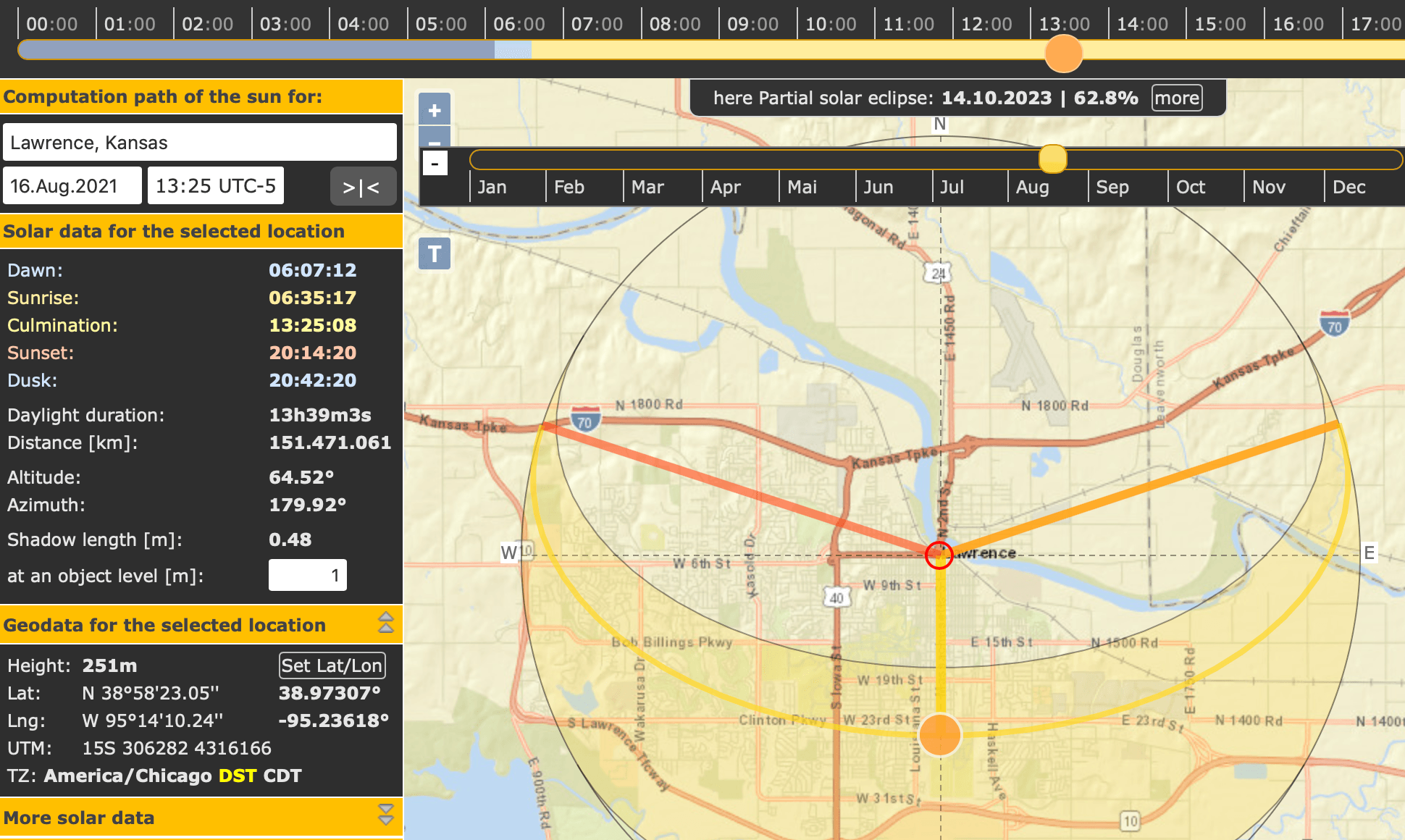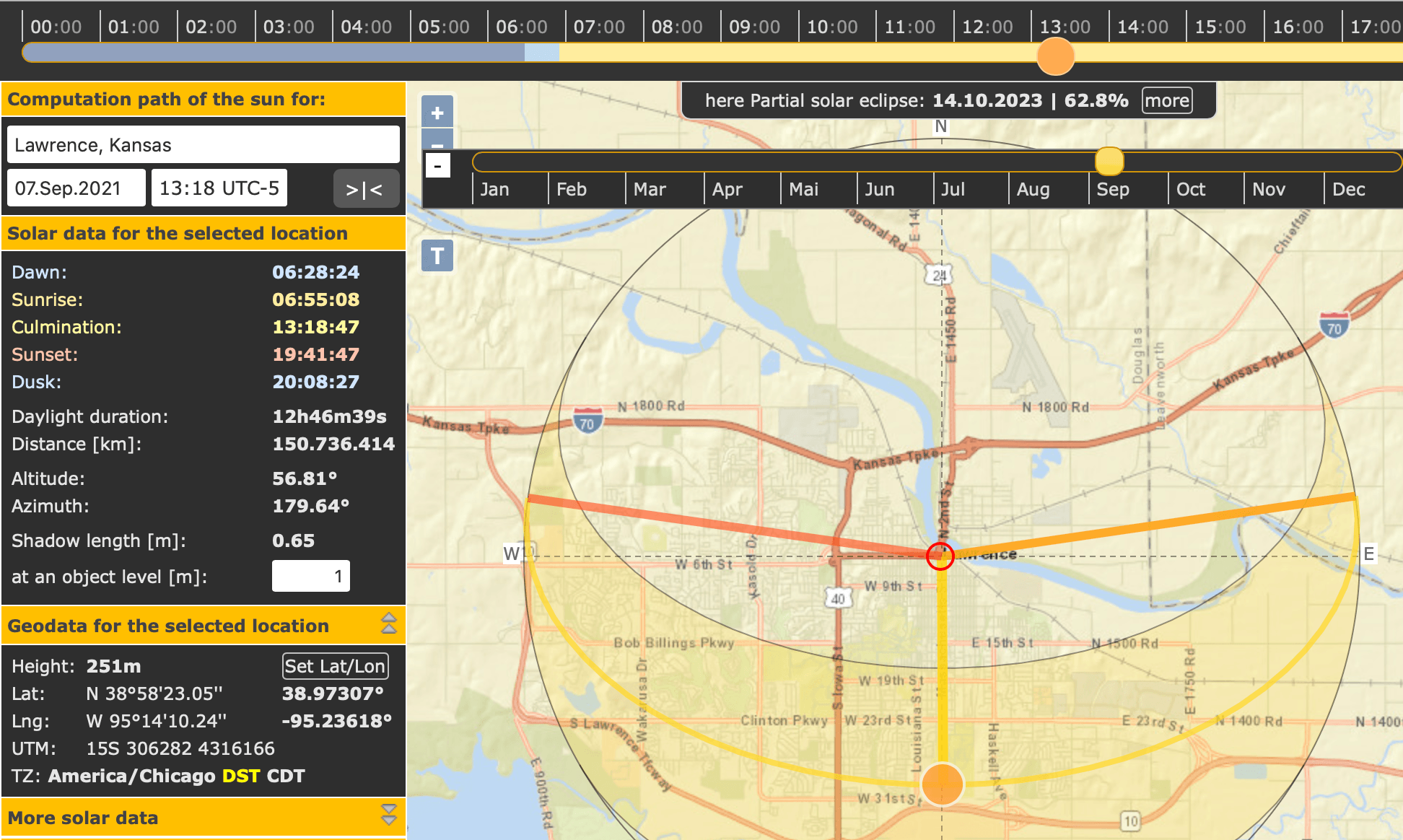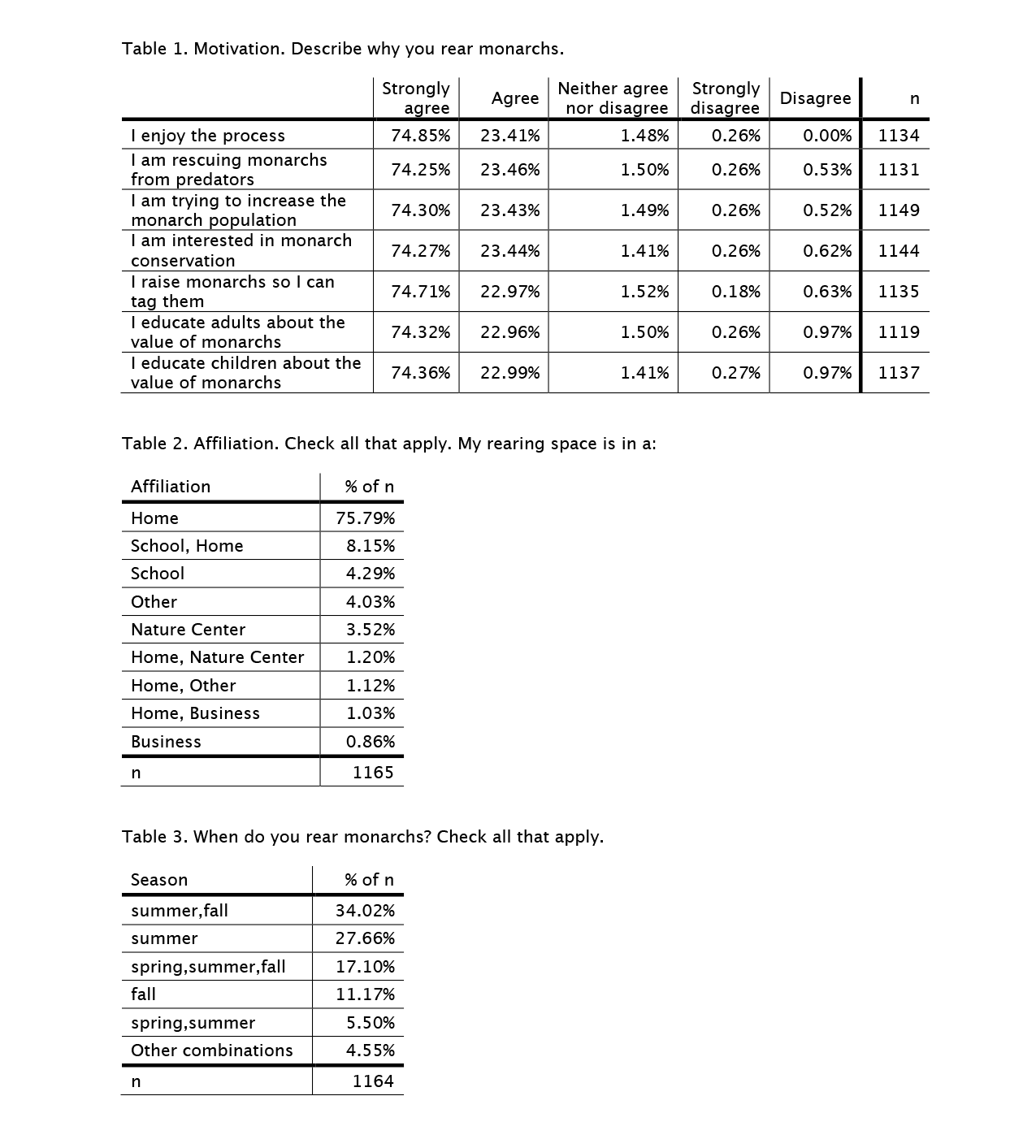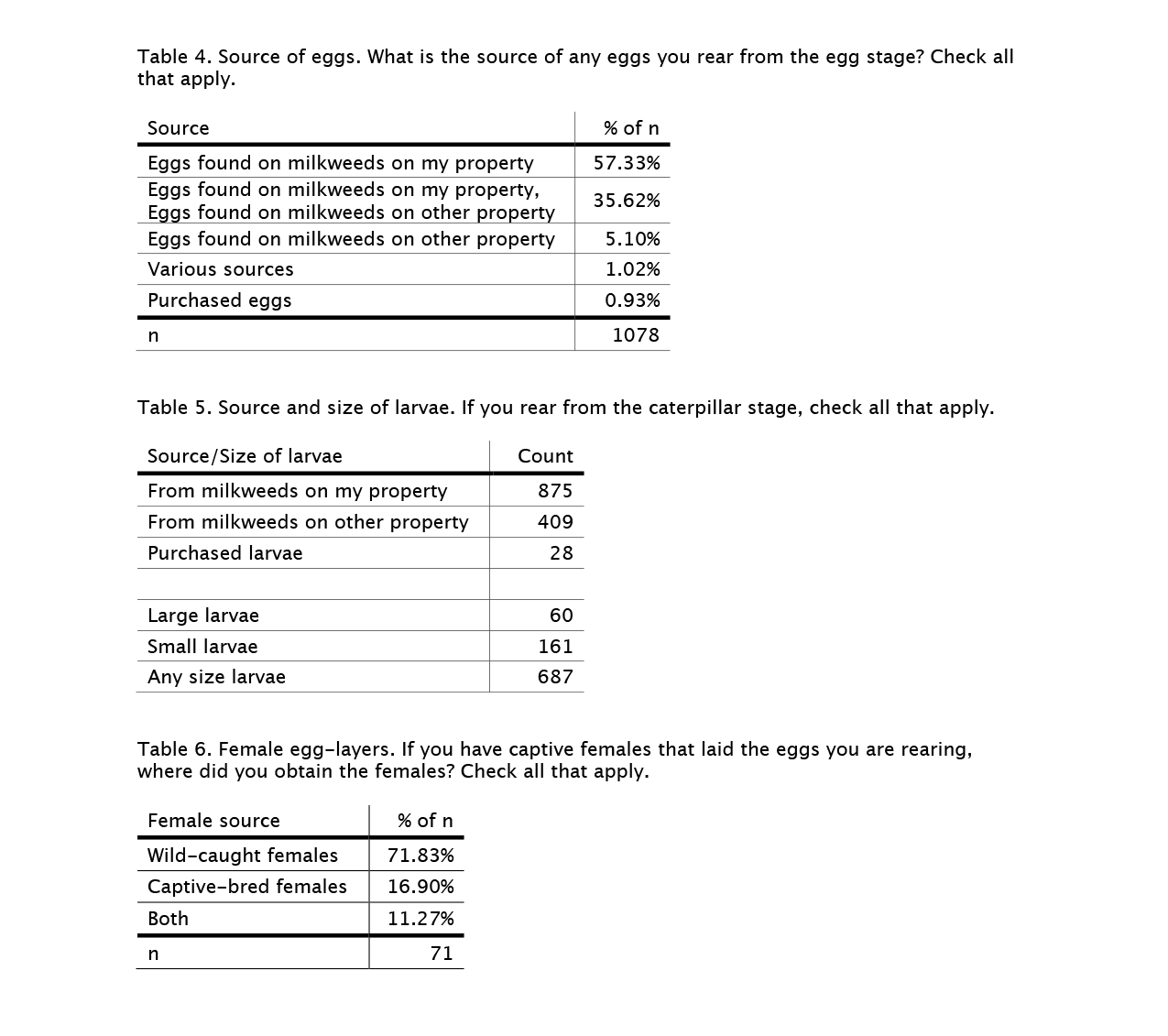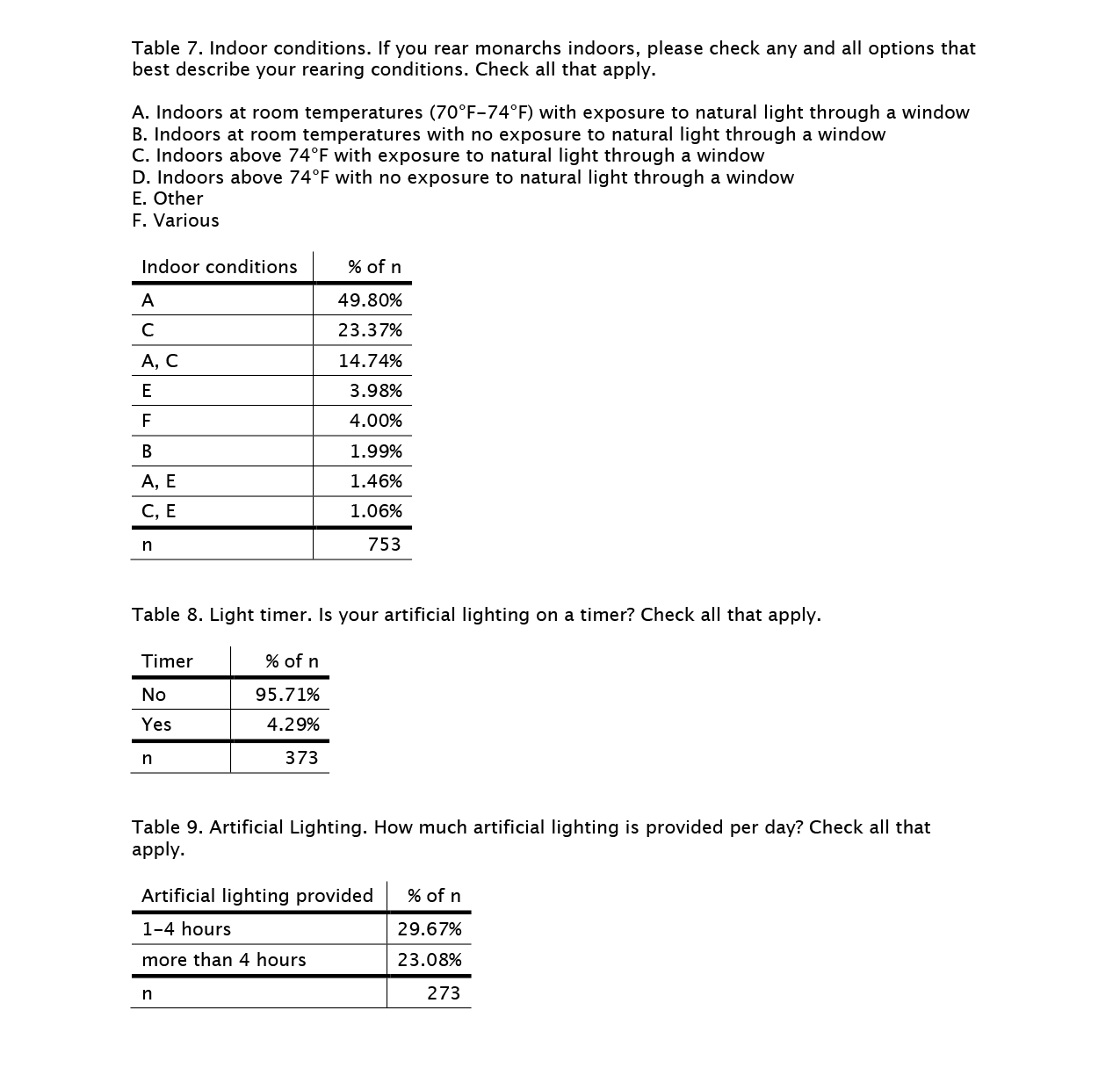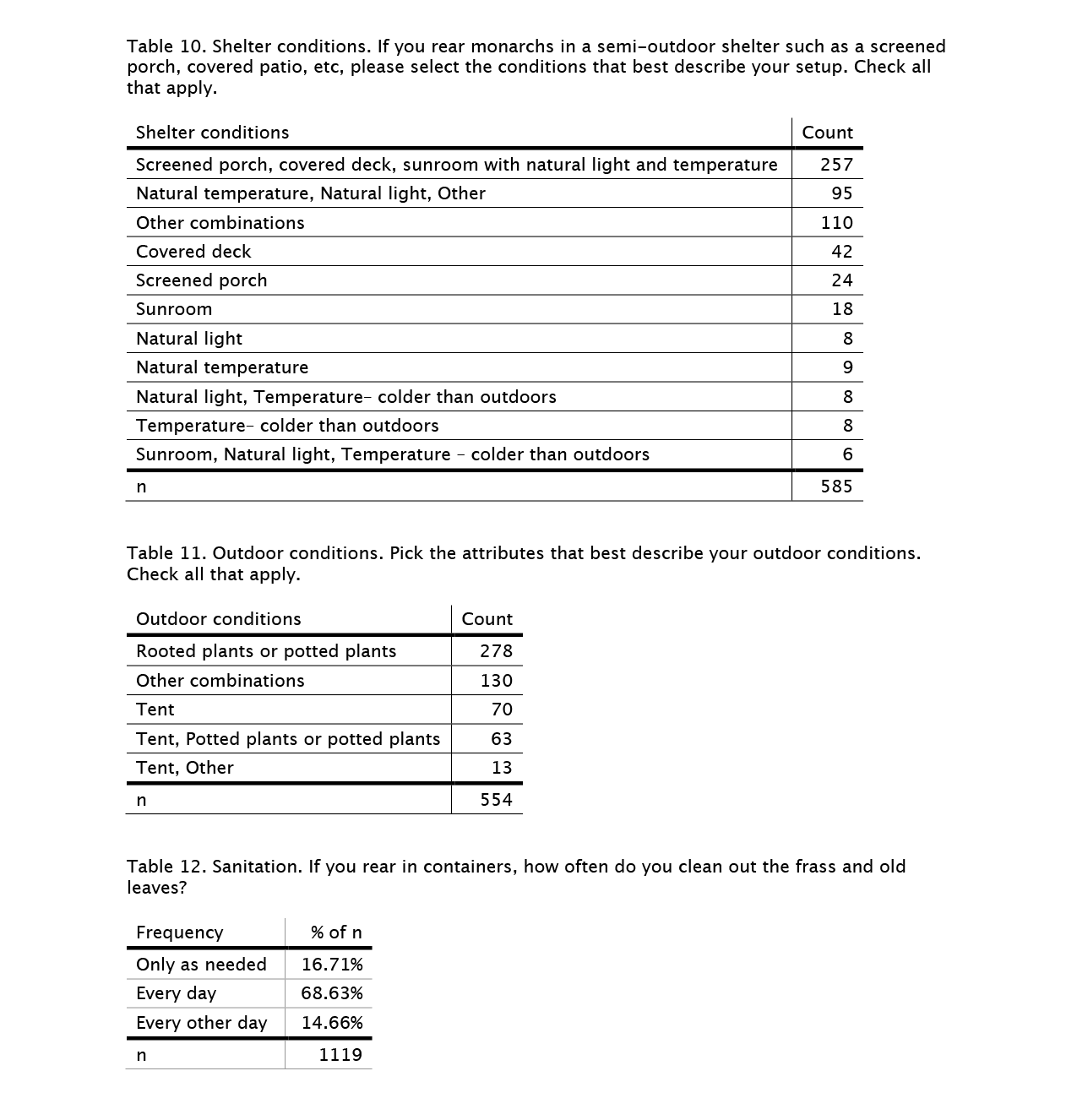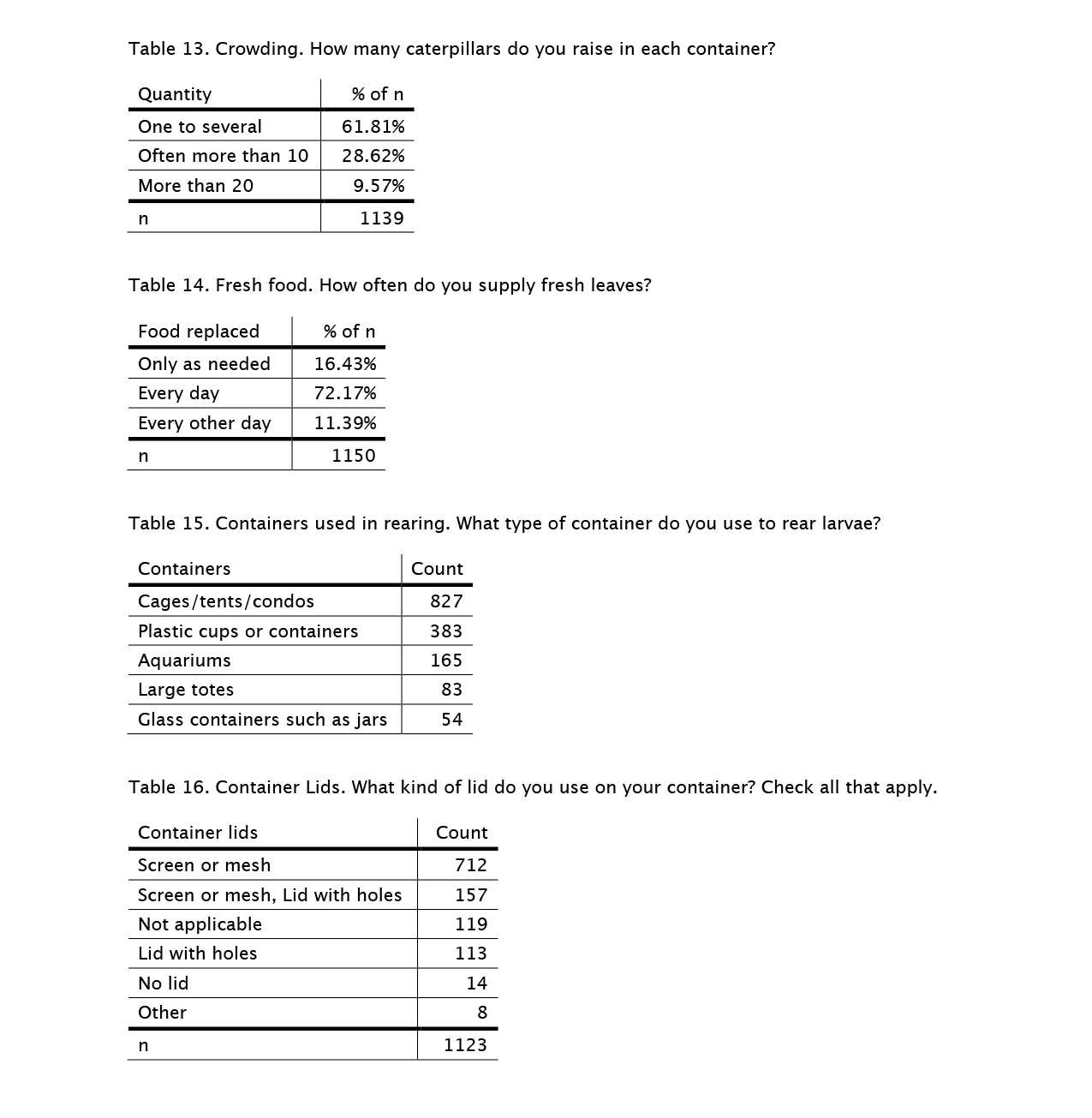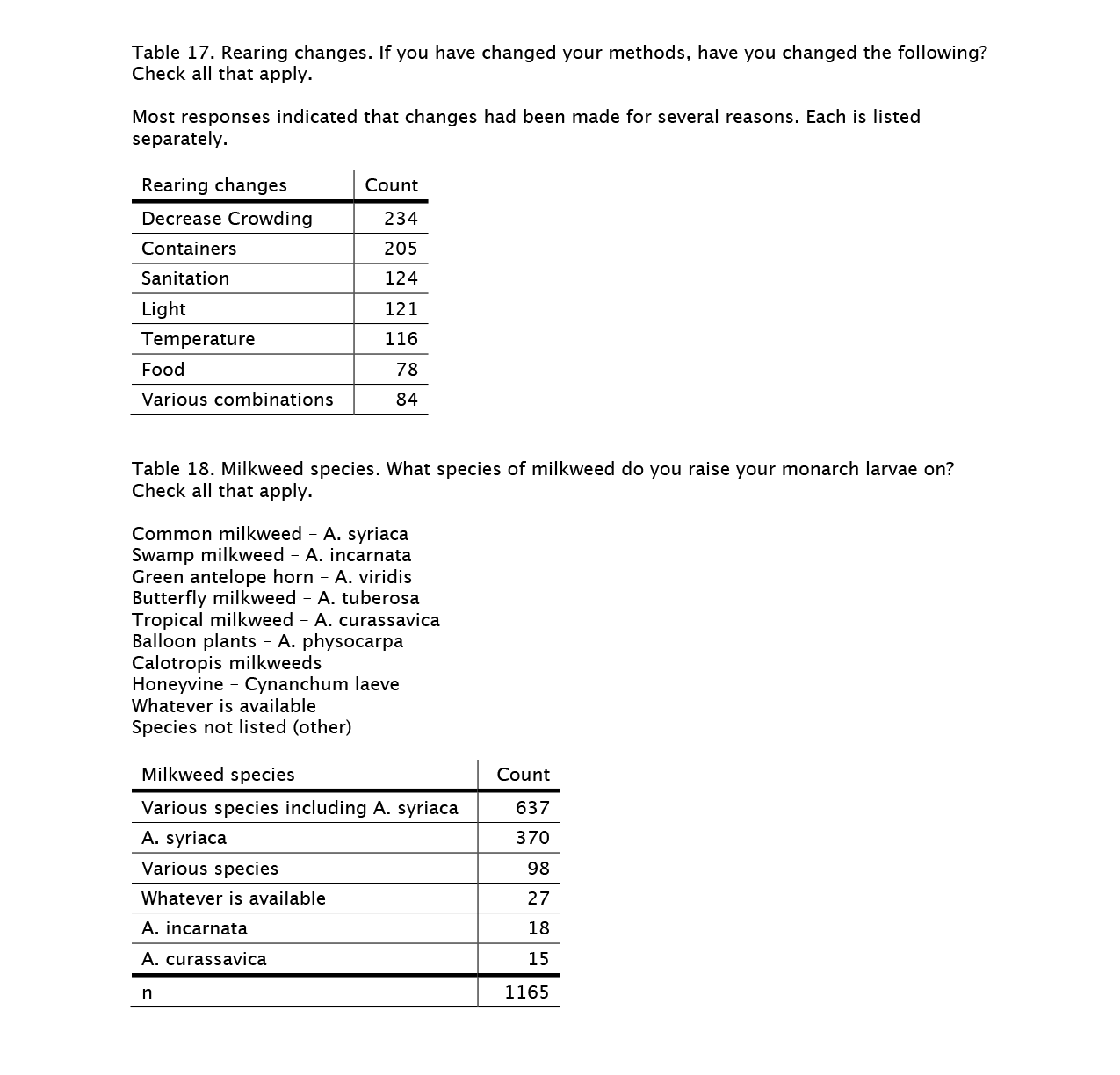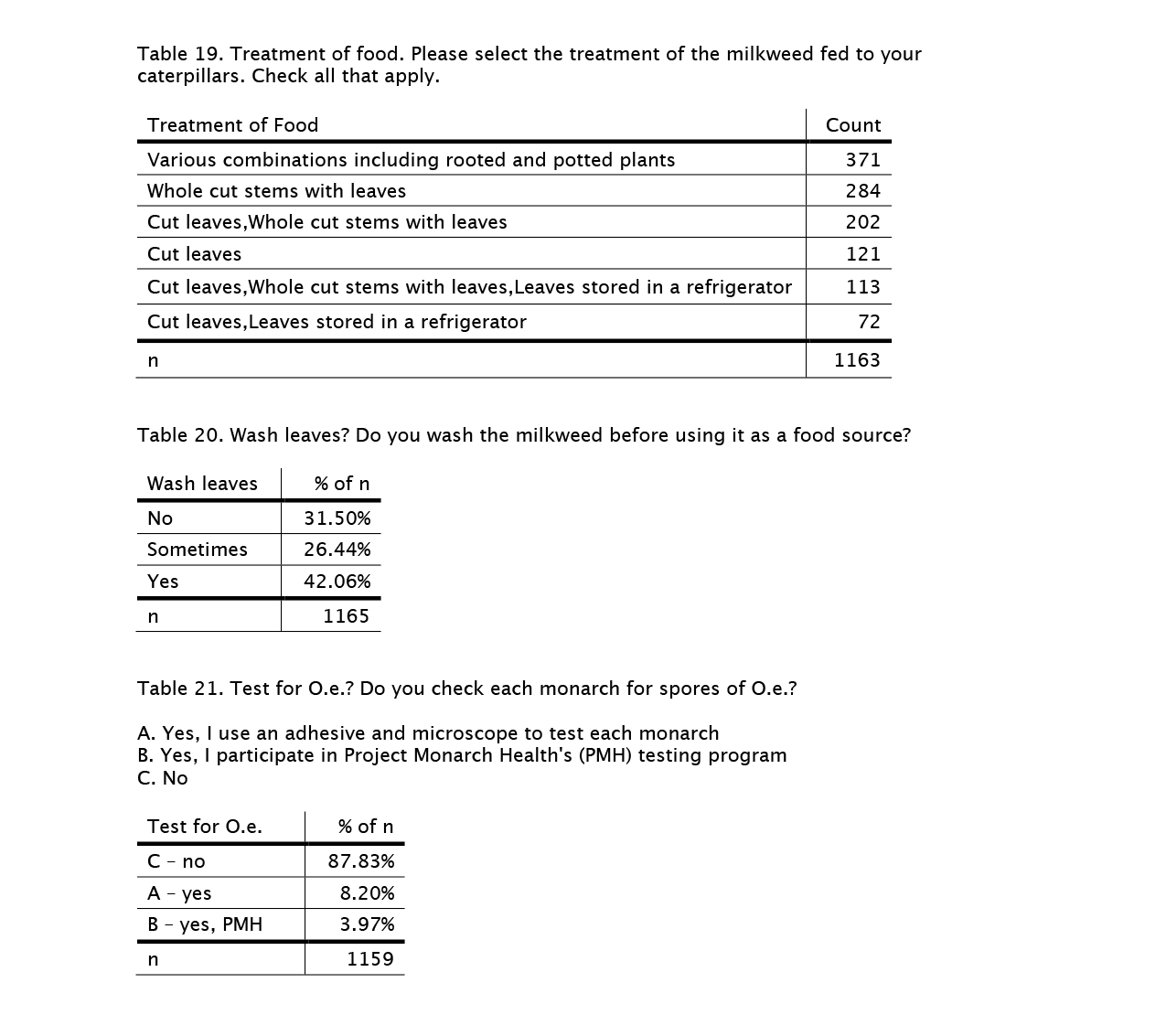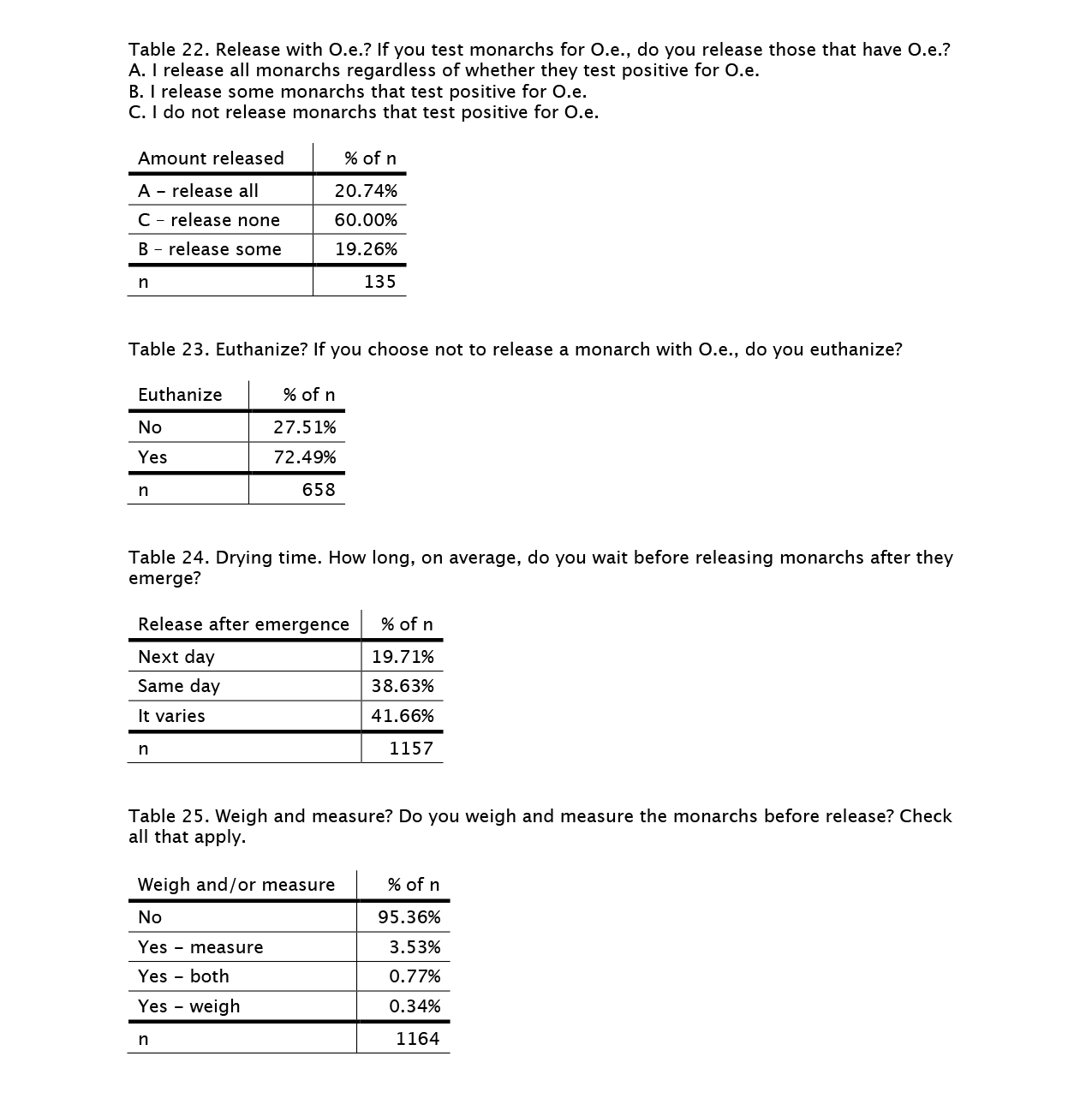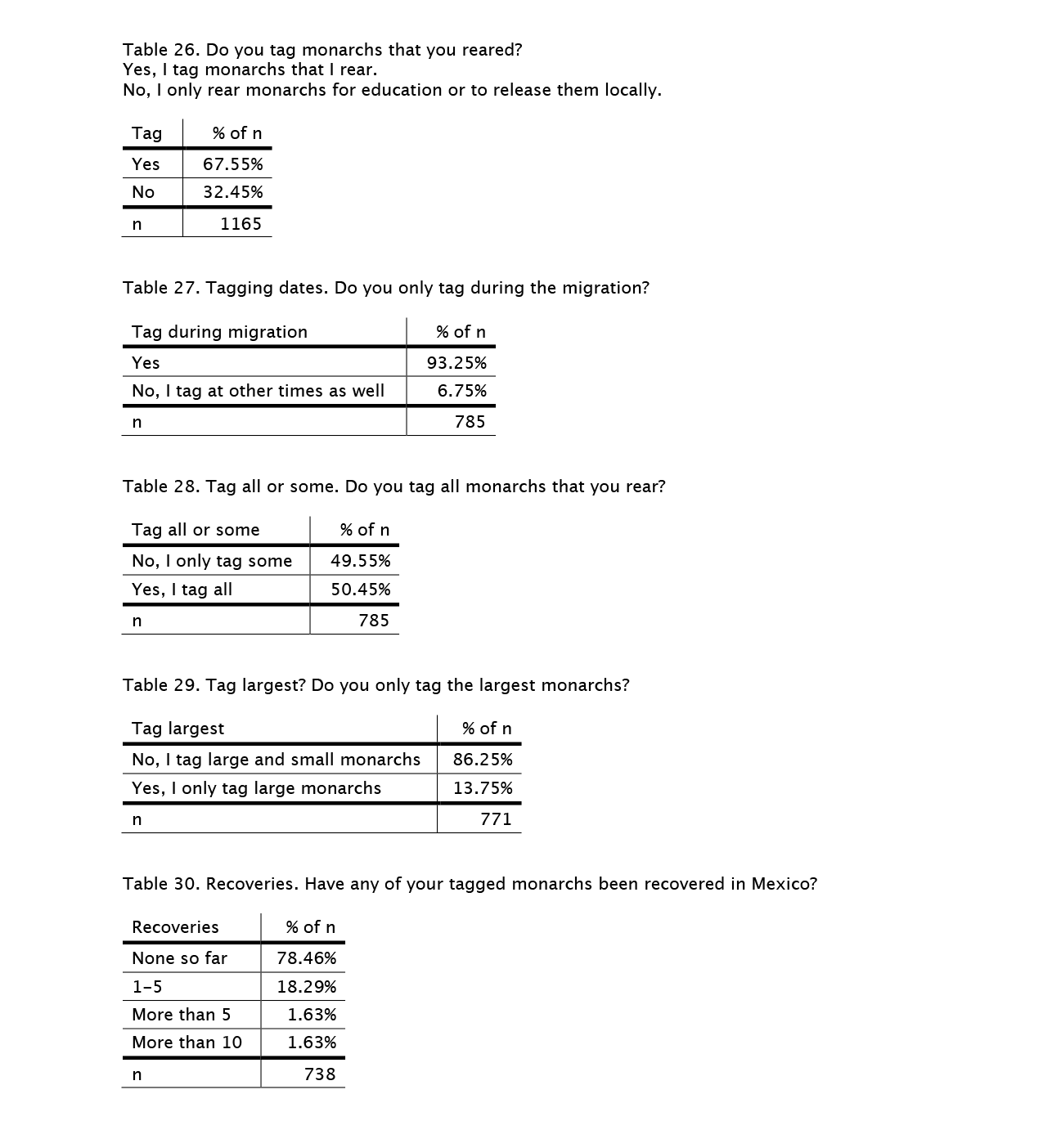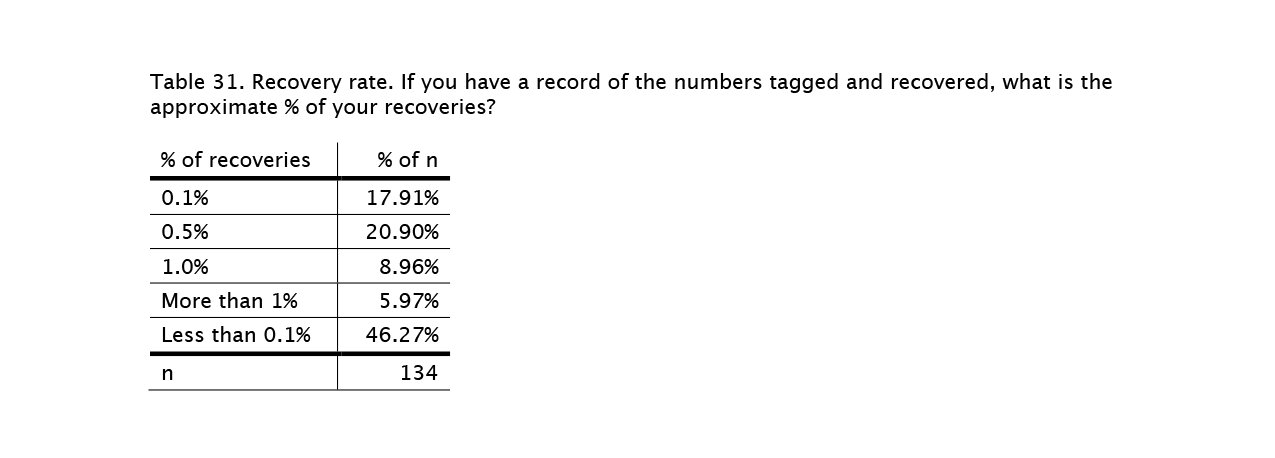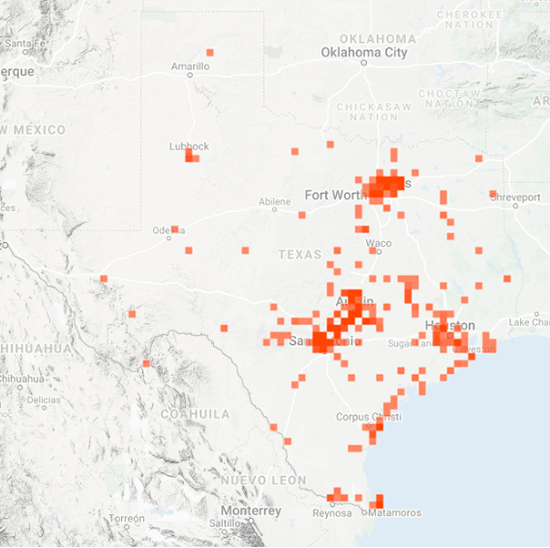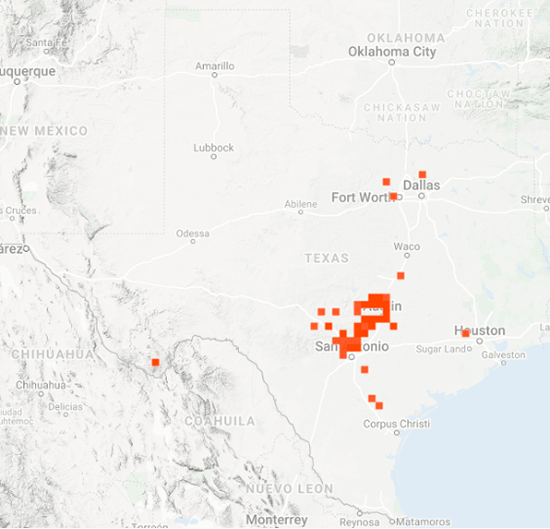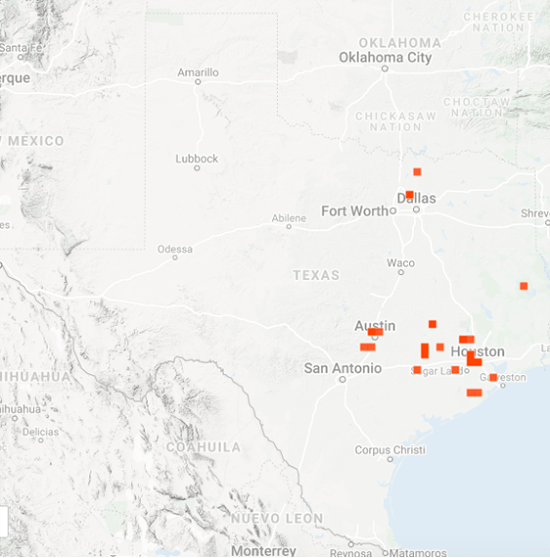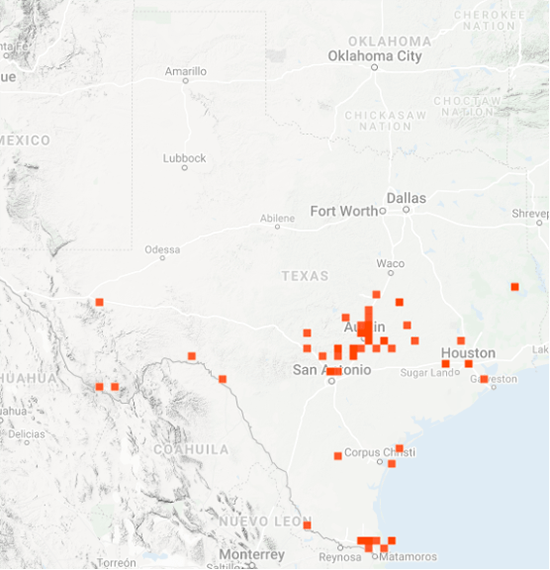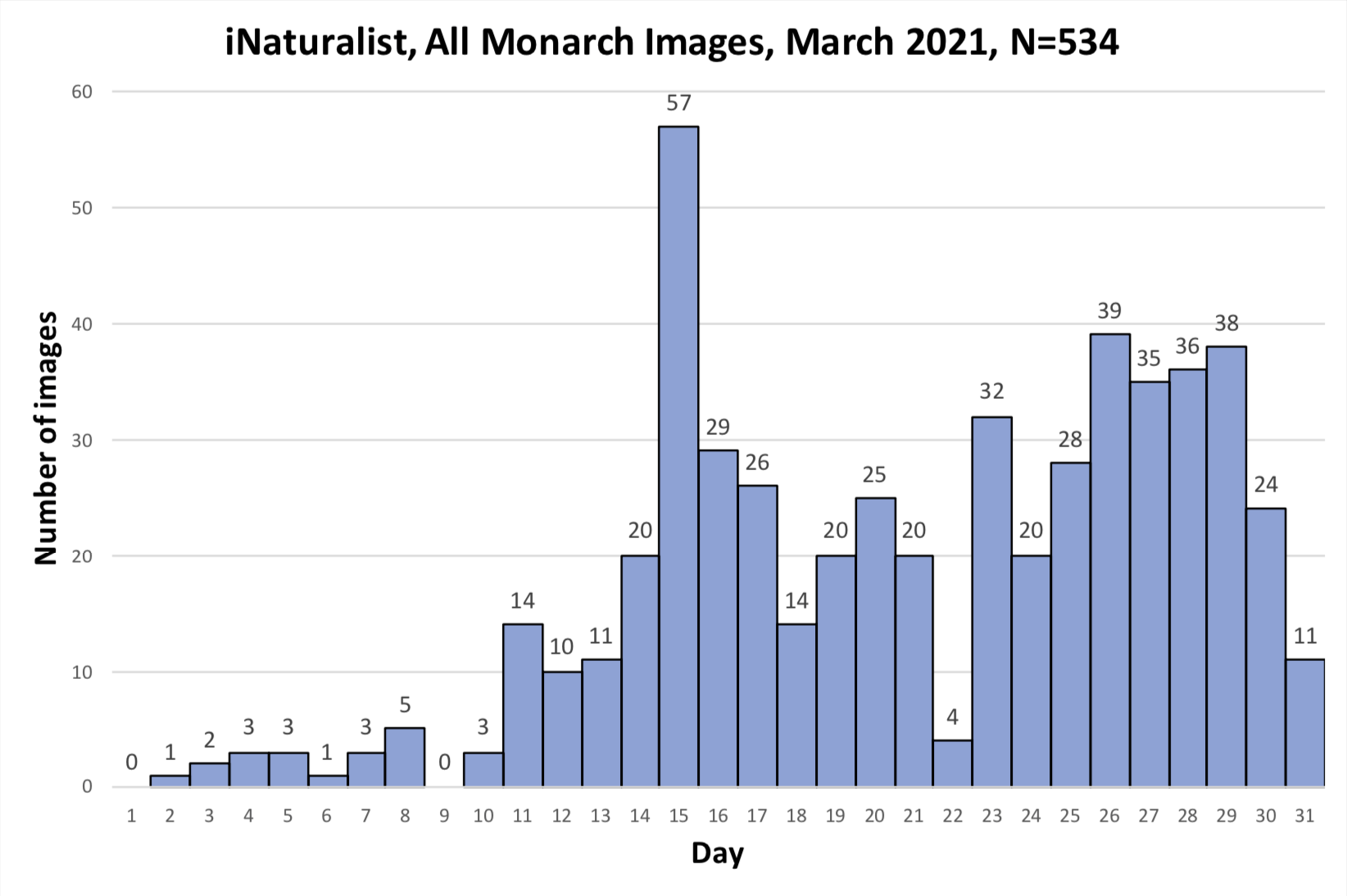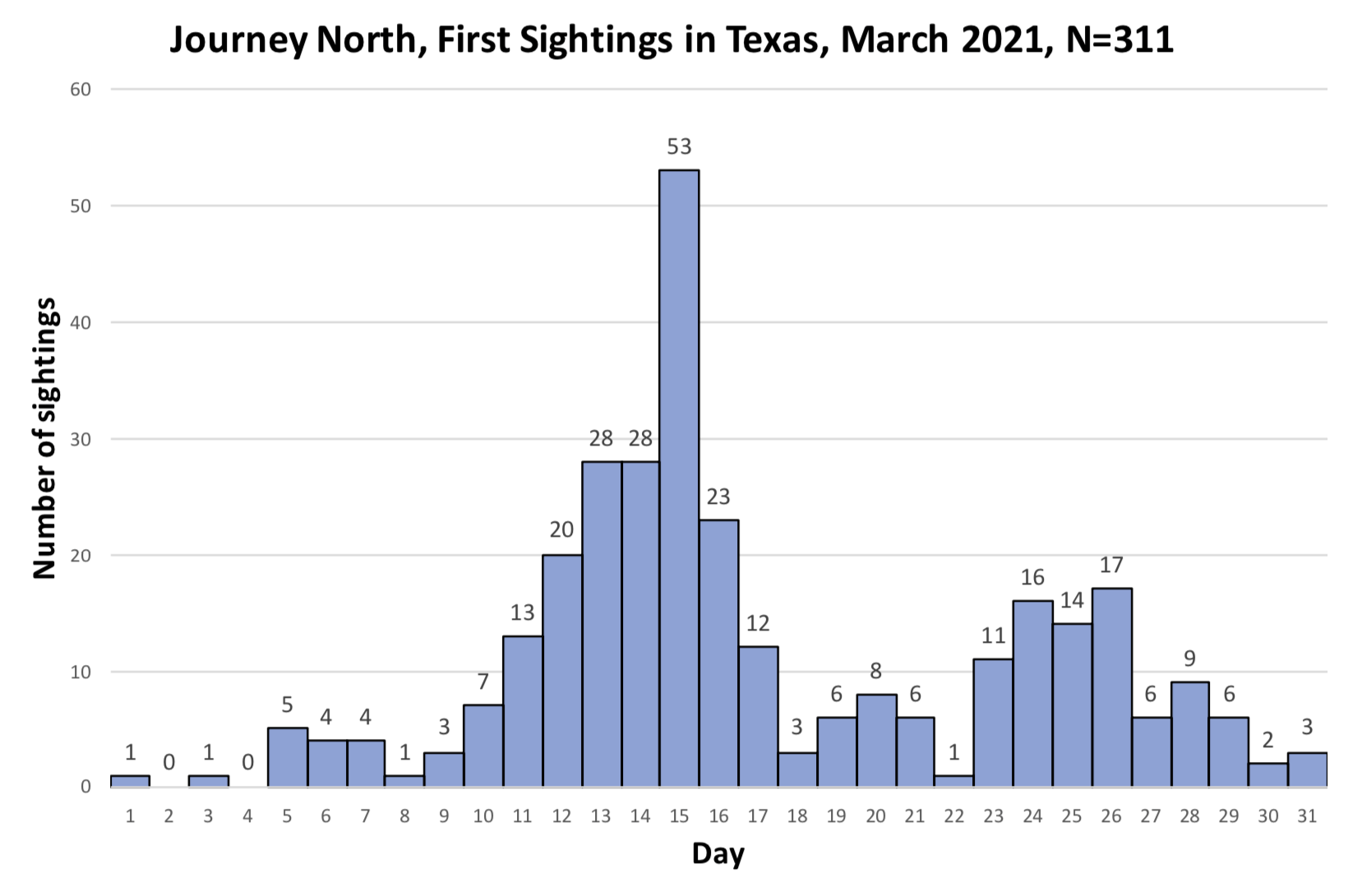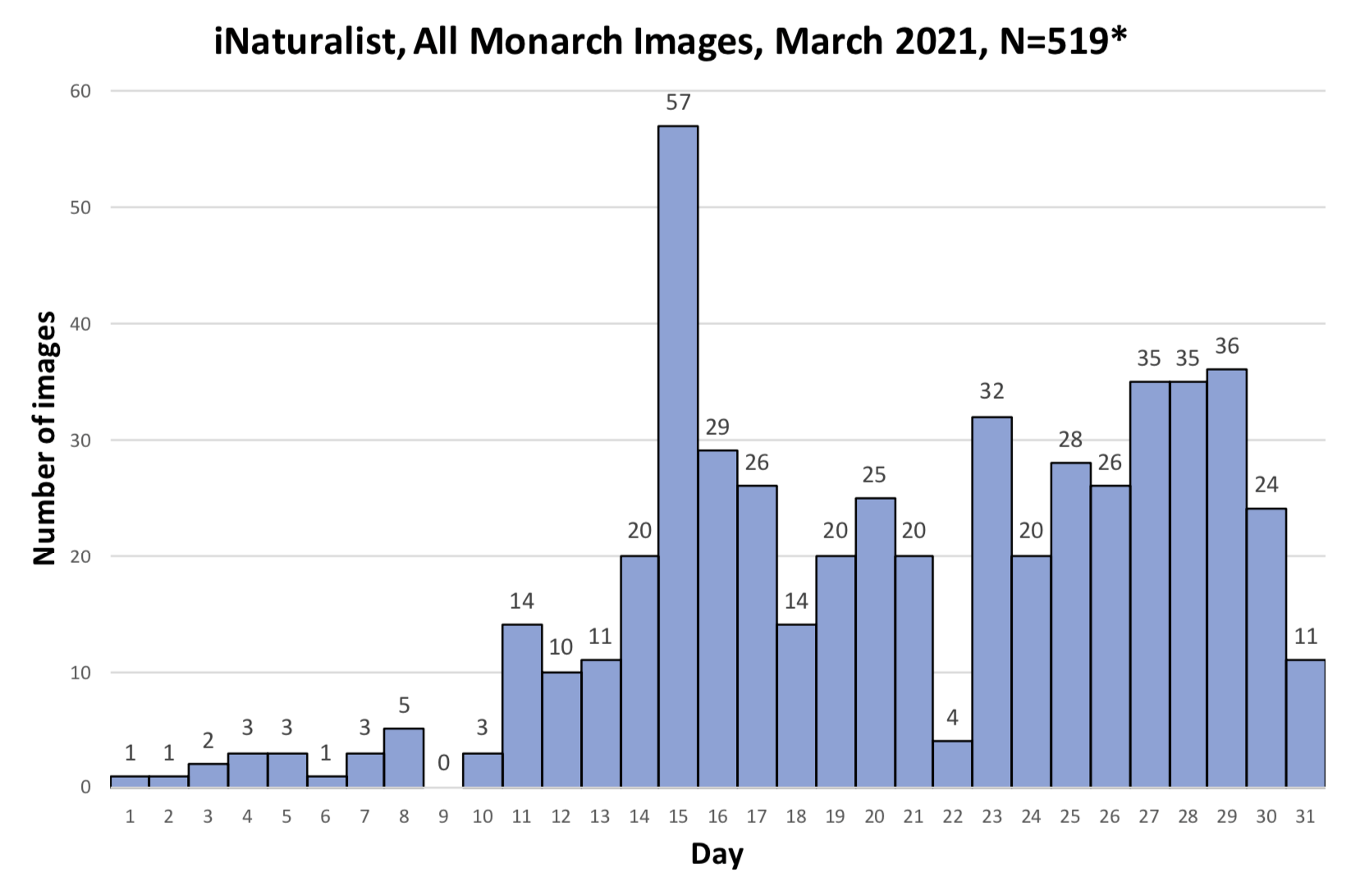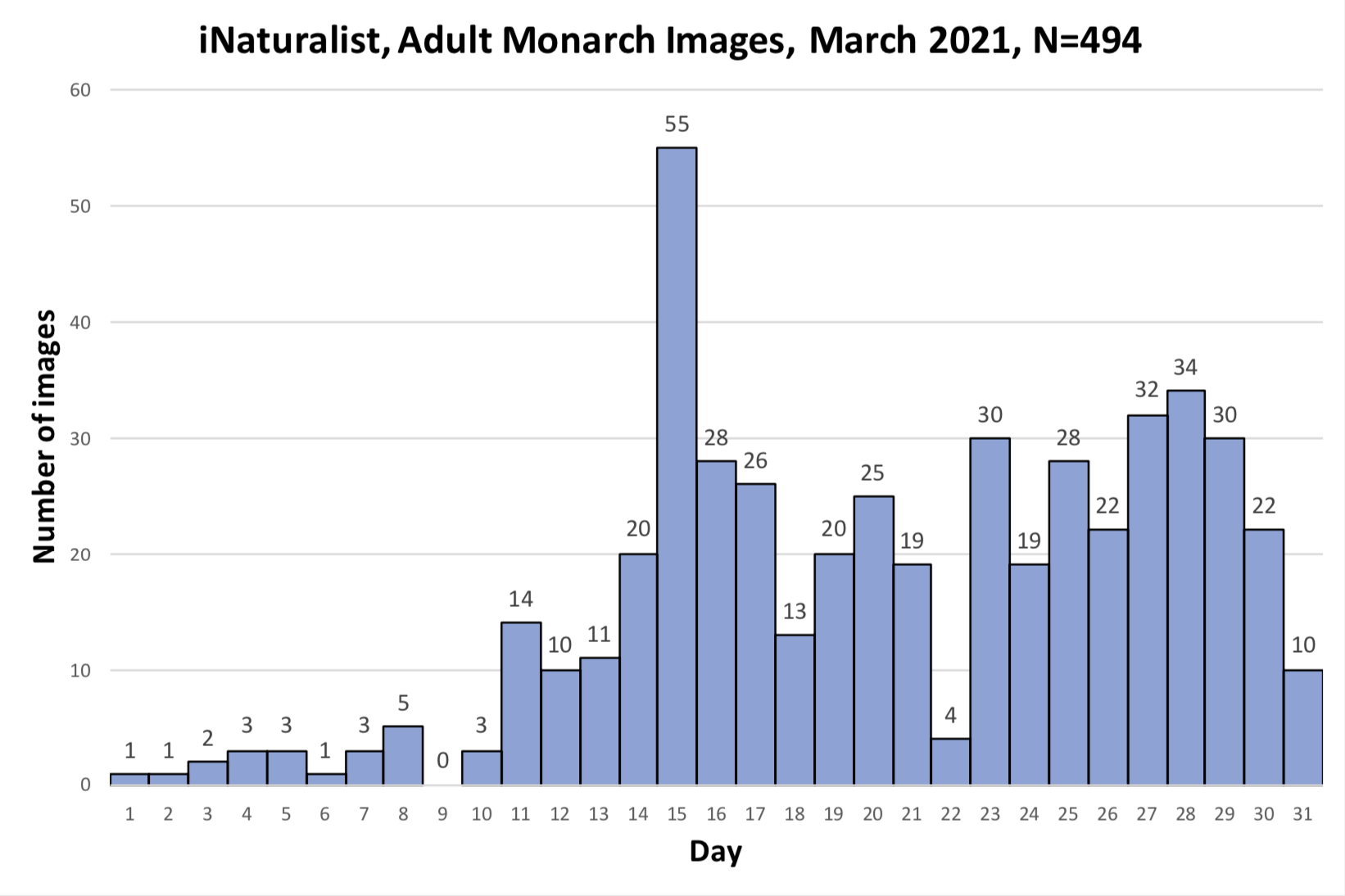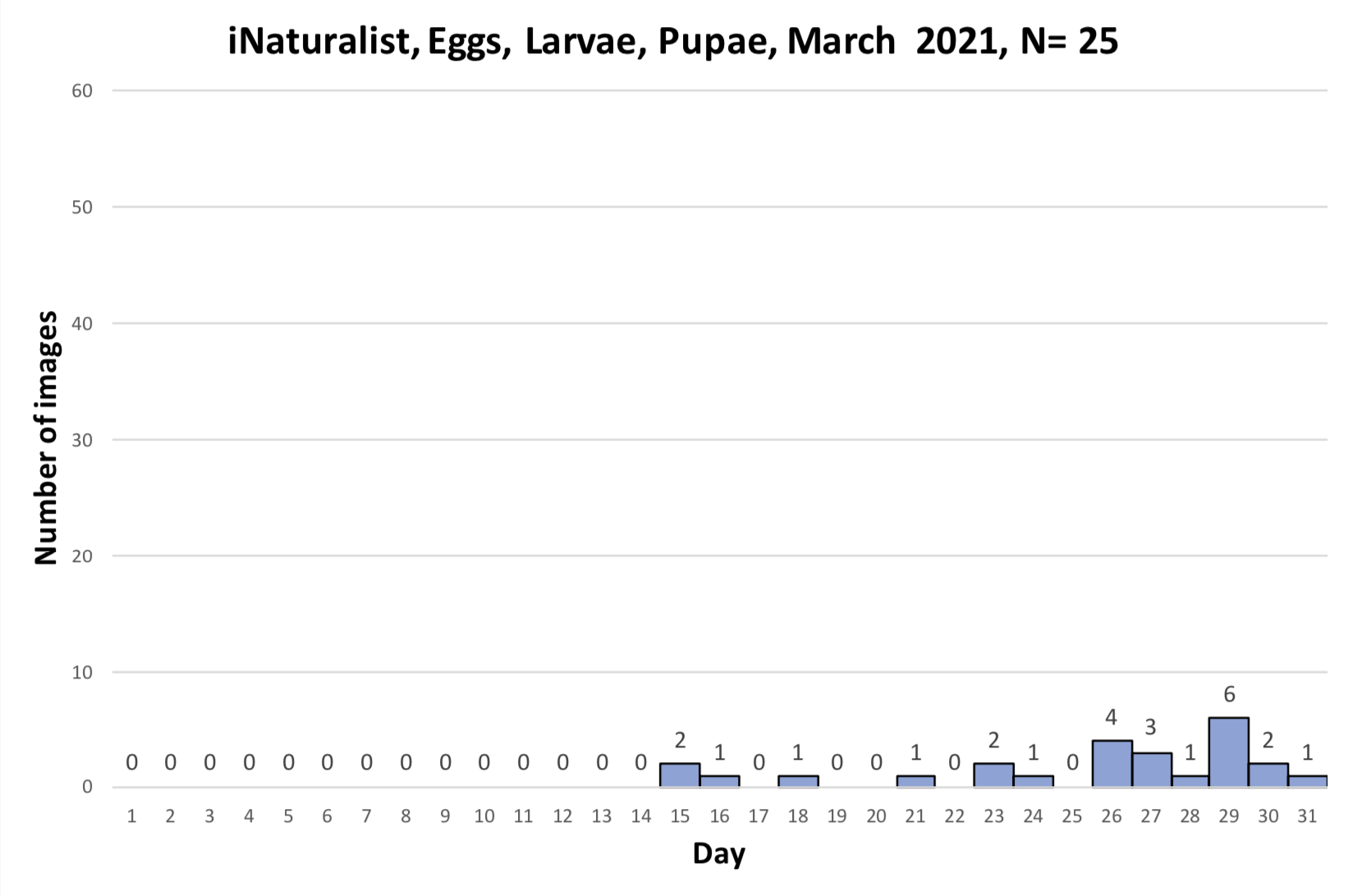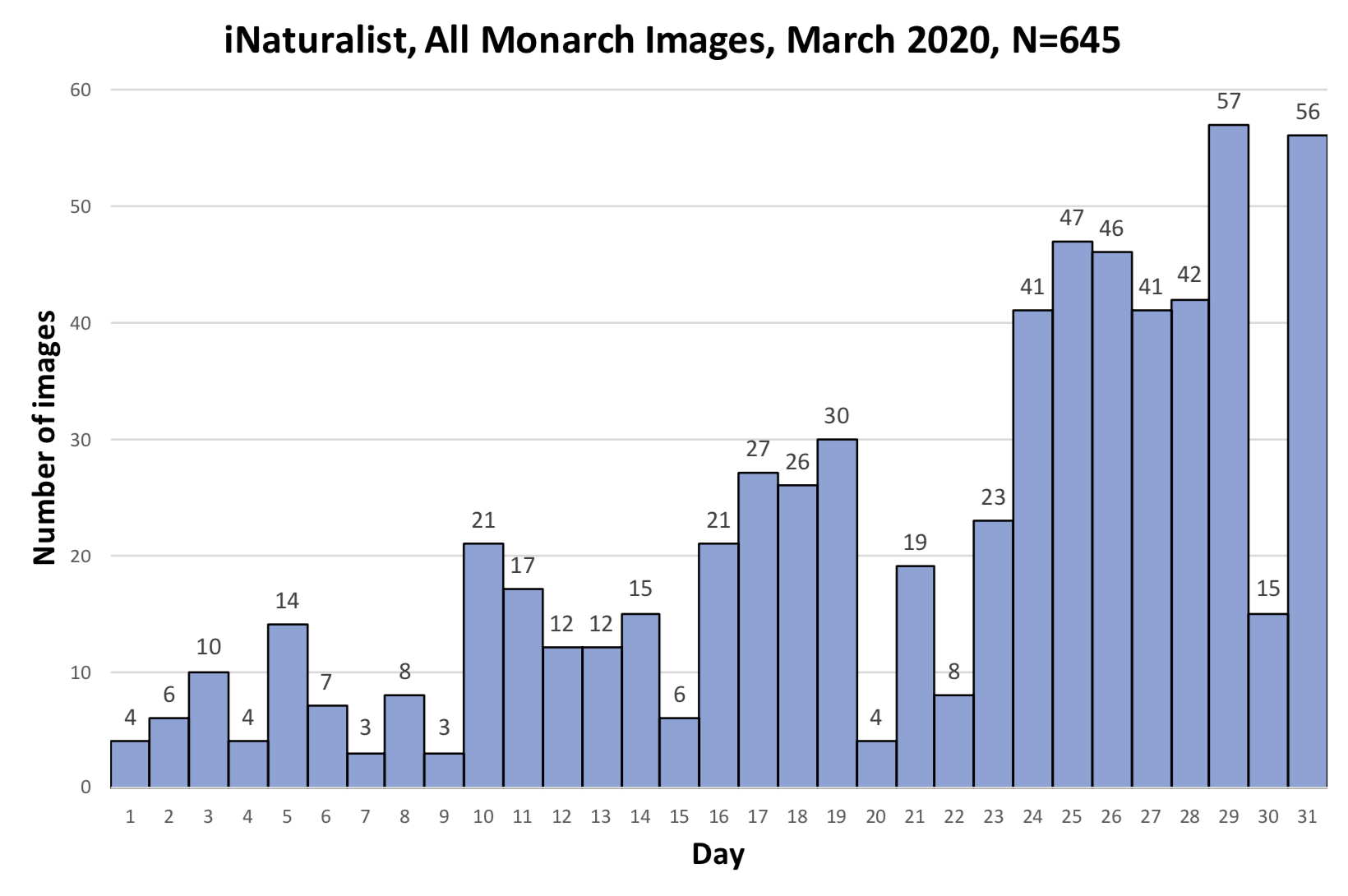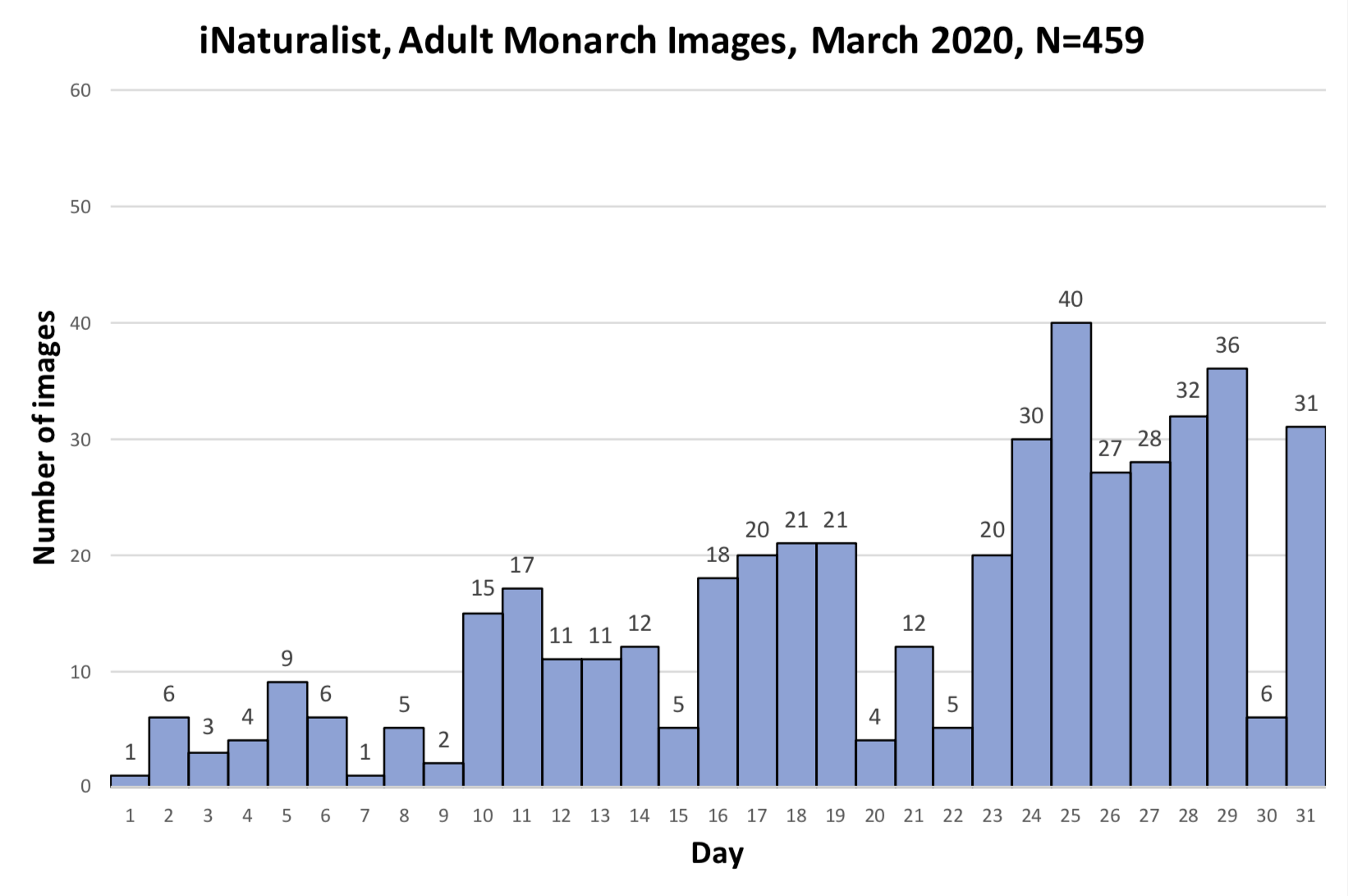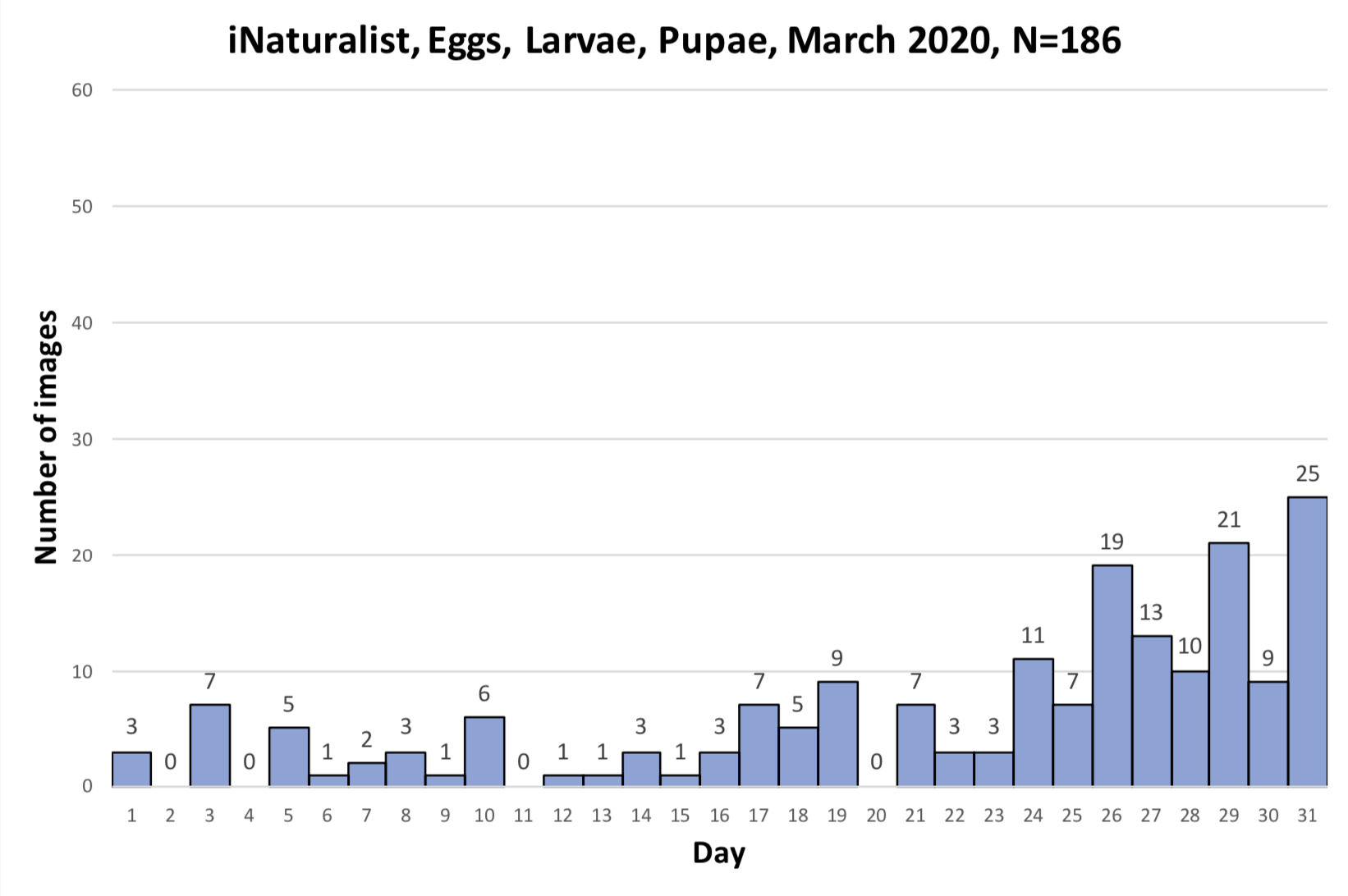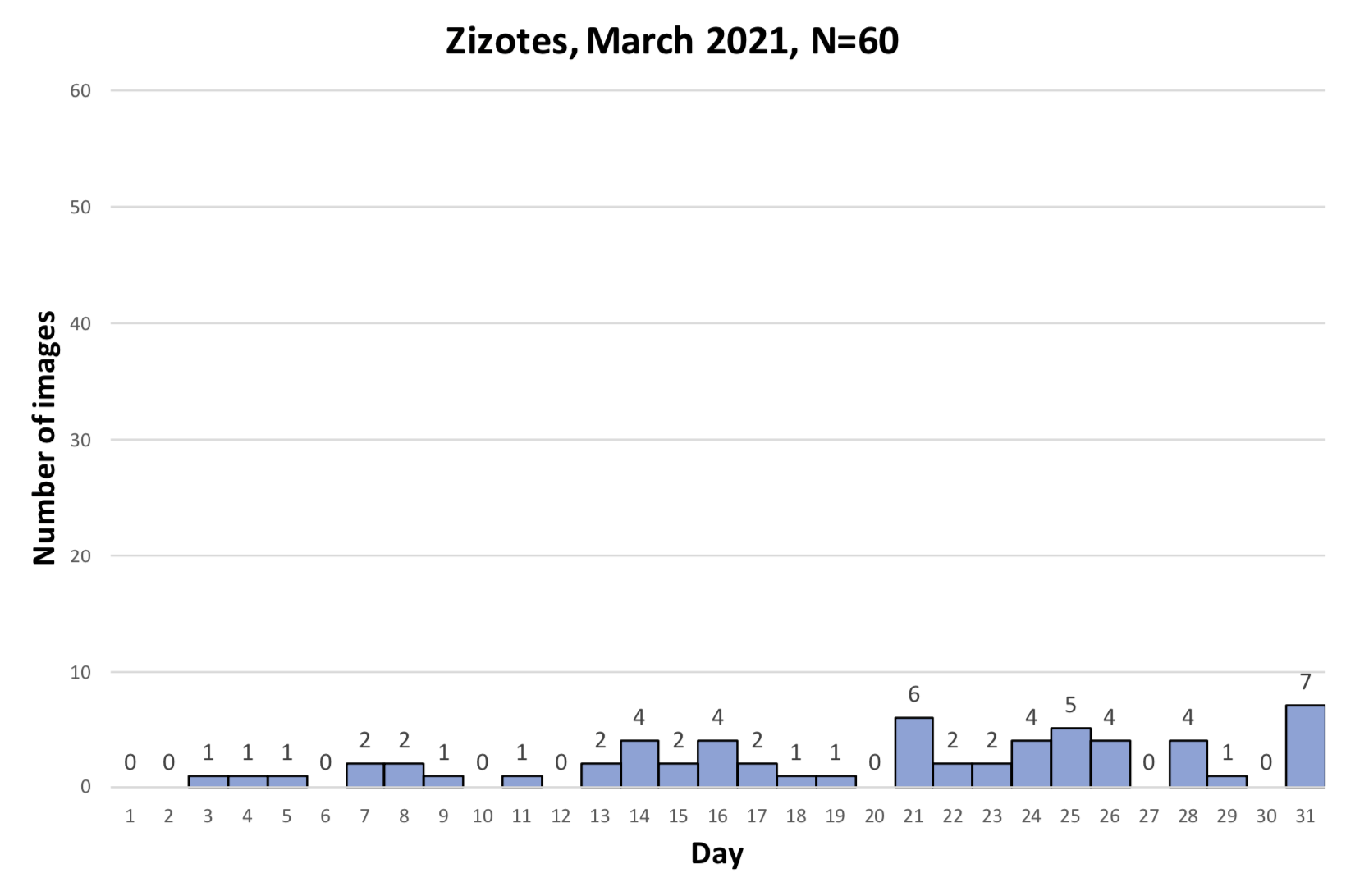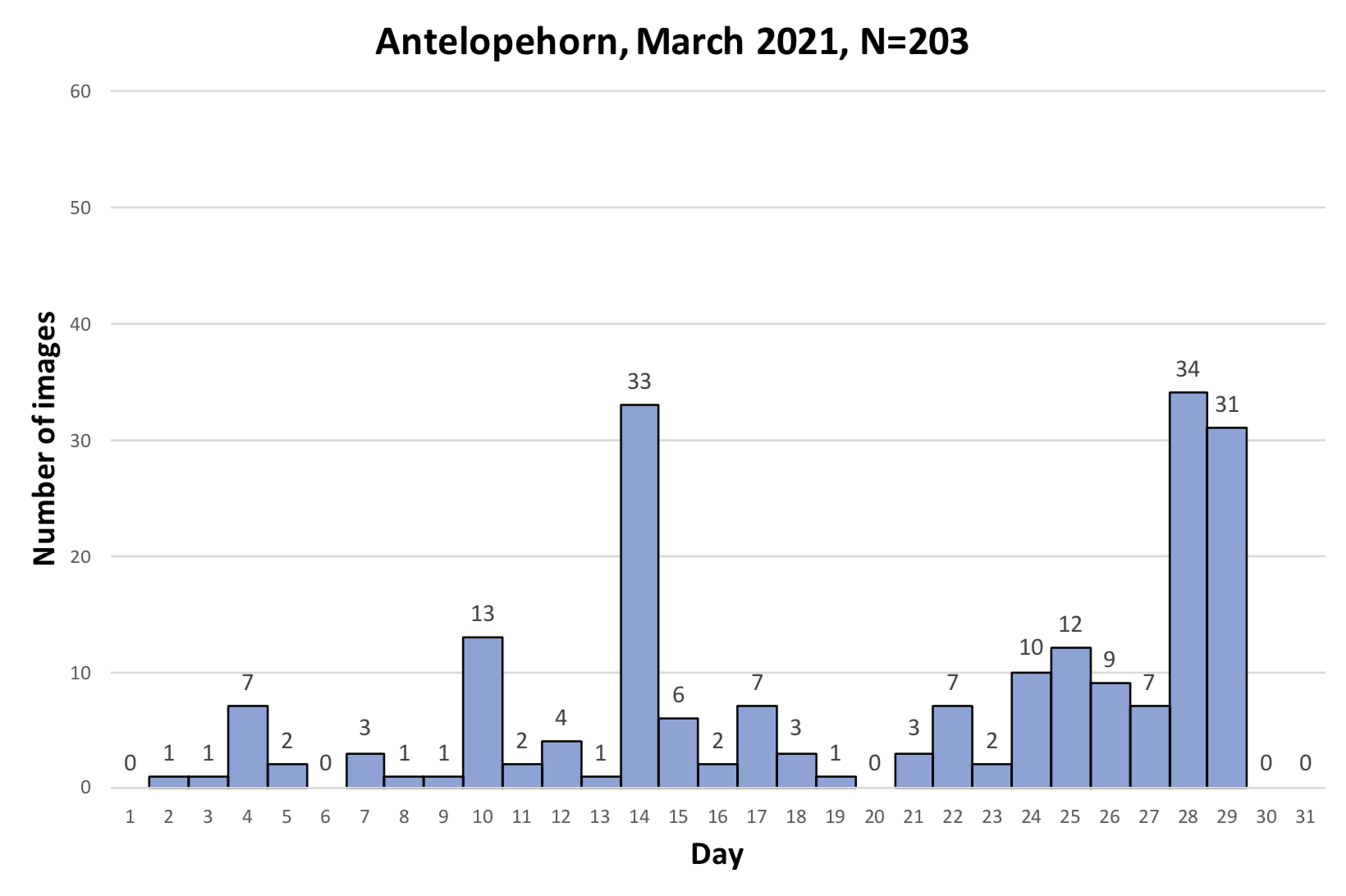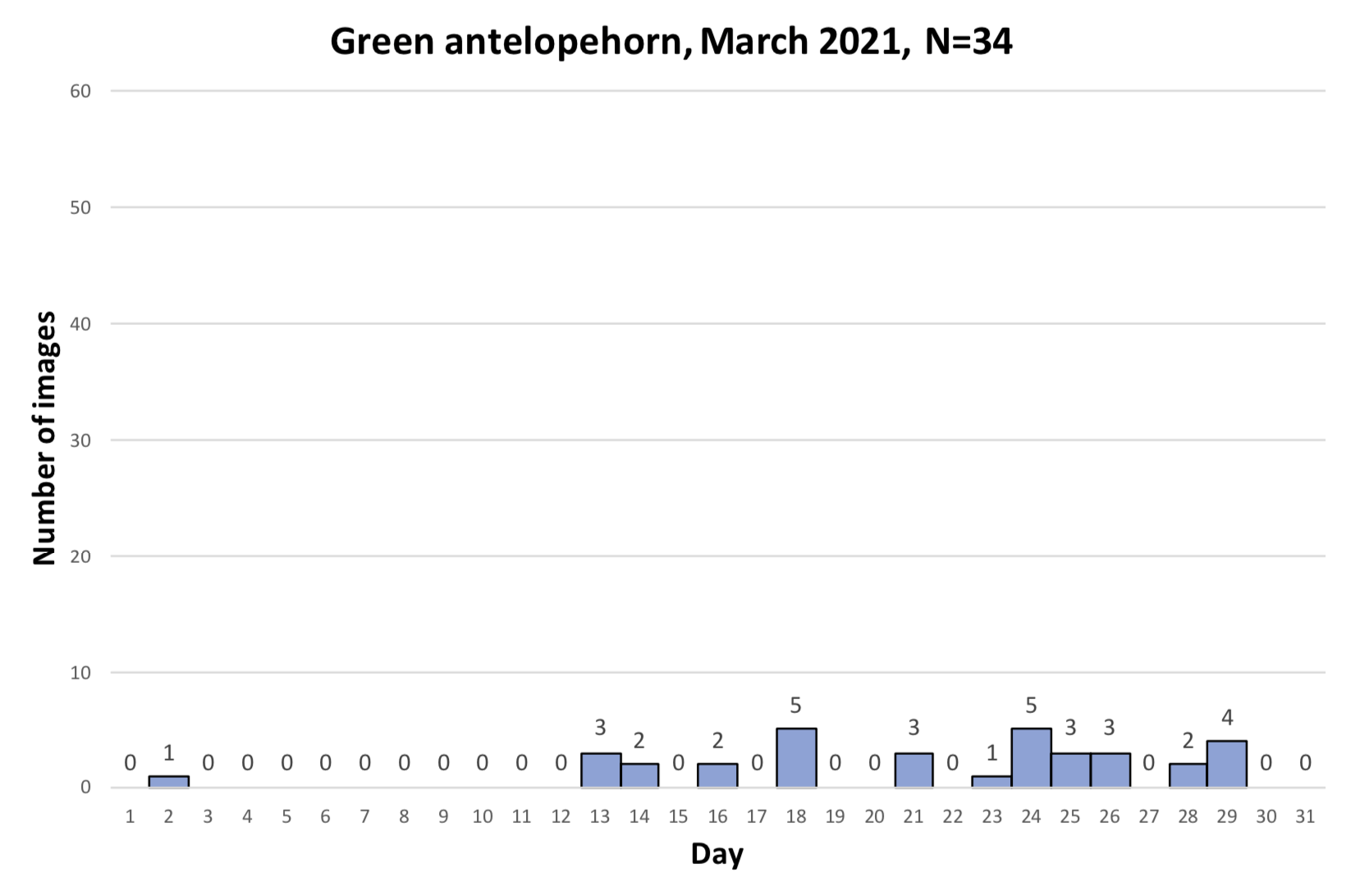Monarch Watch Update August 2021
23 August 2021 | Author: Jim LovettThis newsletter was recently sent via email to those who subscribe to our email updates. If you would like to receive periodic email updates from Monarch Watch, please take a moment to complete and submit the short Google Form at https://monarchwatch.org/subscribe/
Greetings!
Included in this issue:
1. Monarch Population Status
2. Monarch Watch Tagging Kits
3. Submitting Tag Data
4. Chip in for Monarch Watch
5. Monarch Waystations
6. Upcoming Monarch Watch Events
7. About This Monarch Watch List
——————————————————
1. Monarch Population Status —by Chip Taylor
——————————————————
The migration is underway!
EASTERN MONARCHS
As you may remember, earlier I offered that the recolonization this past May and early June of the summer breeding area was quite favorable. Monarchs generally arrived on time and in good numbers leading to a large second generation. Things looked favorable for a large migratory population that could rival that of 2018 (6.05 hectares) – provided that the summer temps were within 2F of the long-term average and that September temperatures in the north were generally normal as well.
I have been following the weather closely for the last several months and things still look good for a large migration over most of the summer breeding area. However, I have doubts about the number of monarchs that will join the migration from the eastern Dakotas and western Minnesota. Portions of that region have been much warmer and drier than is generally ideal for monarch population development.
In contrast, due perhaps to adequate rainfall and moderate summer temperatures, monarchs are much more abundant in Oklahoma and Texas at this time, suggesting that high numbers of monarchs could join the migration from this region in late September and October. The September temperatures are still a question, but there is no evidence of a drought in Texas or elsewhere that might diminish the possibility of surviving the passage to the overwintering sites.
Overall, while the conditions for population growth have been less favorable than in 2018, suggesting an overwintering population of less than 6 hectares, there is every reason to expect a larger overwintering population in Mexico this year than seen during the last two winters (2.83 hectares for 2019-2020 and 2.10 hectares for 2020-2021).
WESTERN MONARCHS
Given the winter, spring, and summer monarch numbers as well as the extreme summer temperatures and drought conditions in the West, the prospects for an overwintering population of more than a few hundred monarchs along the California coast appear to be slim at best.
For those who would like to delve deeper into the timing, pace and duration of the monarch migration, please see a recent post to the Monarch Watch Blog (https://monarchwatch.org/blog): “Some notes on the sun angle at solar noon (SASN) and the passage of the migration”
——————————————————
2. Monarch Watch Tagging Kits
——————————————————
We are in the process of sending out tagging kits for our 30th tagging season – wow! As of today, all preorders and most recent orders going to locations north of (and including) Colorado, Kansas, Missouri, Kentucky, and Virginia have been mailed out. If you are located in that area and you have not yet received your tags, watch your mail for them to arrive within the next 10 days or so. Tags for locations further south will be mailed out soon – priority is always given to those tag orders going to locations that will experience the migration first.
Monarch tagging continues to be an important tool to help us understand the monarch migration and annual cycle – a long-term record is crucial to understand the dynamics of such complex natural phenomena. If you would like to tag monarchs this year, please order your tags soon as they are going fast! Tagging Kits should arrive within 10–12 days but as mentioned above, priority will be given to areas experiencing the migration first.
Monarch Watch Tagging Kits are only shipped to areas east of the Rocky Mountains. Each tagging kit includes a set of specially manufactured monarch butterfly tags (you specify quantity), a data sheet, tagging instructions, and additional monarch / migration information. Tagging Kits for the 2021 season start at only $15 and include your choice of 25, 50, 100, 200, or 500 tags.
Monarch Watch Tagging Kits and other materials (don’t forget a net!) are available via the Monarch Watch Shop online at https://shop.monarchwatch.org – where each purchase helps support Monarch Watch.
2021 datasheets and instructions available online via the Monarch Tagging Program page at https://monarchwatch.org/tagging
Tagging should begin in early to mid-August north of 45N latitude (e.g. Minneapolis), late August at other locations north of 35N (e.g., Oklahoma City, Fort Smith, Memphis, Charlotte) and in September and early October in areas south of 35N latitude. See a map and a table with expected peak migration dates on the Monarch Tagging Program page at the link above.
——————————————————
3. Submitting Tag Data
——————————————————
Thousands of you have submitted your recent tag data to us by mail or via our online submission form – thank you! We are still receiving data sheets and if you haven’t submitted your data yet (for 2020 or even previous years) it is not too late. Please review the “Submitting Your Tagging Data” information on the tagging program page then send us your data via the Tagging Data Submission Form. For 2021, please submit your data soon after you are finished tagging for the season.
Complete information is available at https://monarchwatch.org/tagging if you have questions about submitting your data to us and we have conveniently placed a large “Submit Your Tagging Data” button on our homepage at https://monarchwatch.org that will take you directly to the online form.
There you can upload your data sheets as an Excel or other spreadsheet file (PREFERRED; download a template file from https://monarchwatch.org/tagging) or a PDF/image file (scan or photo).
If you have any questions about getting your data to us, please feel free to drop Jim a line anytime via JLOVETT@KU.EDU
——————————————————
4. Chip in for Monarch Watch
——————————————————
Our “Chip in for Monarch Watch” fundraising campaign was created in honor of our director and founder, Chip Taylor (whose birthday happens to be at the end of August, by the way). This campaign offers a chance for Monarch Watchers, colleagues, friends, and family across the planet to show their support for Chip and the Monarch Watch program he brought to life more than a quarter-century ago. It has provided tremendous support for Monarch Watch over the years, through both monetary contributions and kind words.
We encourage you to spend a little time reading through previous donor comments on the Chip in for Monarch Watch page (https://monarchwatch.org/chip) – the connections that are facilitated by monarchs and Monarch Watch are truly extraordinary.
The 2021 Chip in for Monarch Watch fundraising campaign is now underway! If you are in a position to offer financial support to Monarch Watch (or know someone who might be), please consider making a donation of any amount during this campaign.
Here’s how it works:
1. Donate online via KU Endowment: https://kuendowment.org/monarch (offline options are also available, see below)
2. Submit your pledge, comments, thanks, birthday wishes, photos, etc. for Chip: https://monarchwatch.org/chip/submit
3. We will assemble a donor list, comments, and photos to present to Chip at the end of the campaign.
Donating securely online is easy but if you would rather make a donation by phone or mail please see complete details at https://monarchwatch.org/chip/
Thank you!
Chip in for Monarch Watch: https://monarchwatch.org/chip
——————————————————
5. Monarch Waystations
——————————————————
To offset the loss of milkweeds and nectar sources we need to create, conserve, and protect monarch butterfly habitats. You can help by creating “Monarch Waystations” in home gardens, at schools, businesses, parks, zoos, nature centers, along roadsides, and on other unused plots of land. Creating a Monarch Waystation can be as simple as adding milkweeds and nectar sources to existing gardens or maintaining natural habitats with milkweeds. No effort is too small to have a positive impact.
Have you created a habitat for monarchs and other wildlife? If so, help support our conservation efforts by registering your habitat as an official Monarch Waystation today!
https://monarchwatch.org/waystations
A quick online application will register your site and your habitat will be added to the online registry. You will receive a certificate bearing your name and your habitat’s ID that can be used to look up its record. You may also choose to purchase a metal sign to display in your habitat to encourage others to get involved in monarch conservation.
As of 4 August 2021, there have been 35,768 Monarch Waystation habitats registered with Monarch Watch! Texas holds the #1 spot with 2,922 habitats and Illinois (2,789), Michigan (2,662), California (2,319), Ohio (1,863), Florida (1,788), Virginia (1,602), Wisconsin (1,570), Pennsylvania (1,557) and Ontario (1,179) round out the top ten.
You can view the complete listing and a map of approximate locations via https://monarchwatch.org/waystations/registry
——————————————————
6. Upcoming Monarch Watch Events
——————————————————
Monarch Watch Fall Open House
Event Canceled 🙁
Lawrence, Kansas
We had hoped to be able to welcome you back to our Fall Open House event, but we are all going to have to wait a bit longer – sorry! We invite you to visit our garden and enjoy our outdoor space on your own this fall. Evenings and/or weekends would be the best time to visit given the parking restrictions on campus. Thank you for your interest and we hope to see you in person soon. Stay safe!
Monarch Watch Tagging Event (Free event)
Saturday, September 18, 2021
Baker Wetlands Discovery Center
Lawrence, Kansas
The tagging has always been an outdoor event so we are still planning to host it in cooperation with the Jayhawk Audubon Society and the Baker Wetlands Discovery Center – it should be similar to previous years. If you’ll be in the Lawrence, Kansas area in September, we’d love for you to join us so mark your calendars and stay tuned to our website, emails and social media for updates.
Complete details: https://monarchwatch.org/tag-event/
——————————————————
7. About This Monarch Watch List
——————————————————
Monarch Watch (https://monarchwatch.org) is a nonprofit education, conservation, and research program affiliated with the Kansas Biological Survey & Center for Ecological Research at the University of Kansas. The program strives to provide the public with information about the biology of monarch butterflies, their spectacular migration, and how to use monarchs to further science education in primary and secondary schools. Monarch Watch engages in research on monarch migration biology and monarch population dynamics to better understand how to conserve the monarch migration and also promotes the protection of monarch habitats throughout North America.
We rely on private contributions to support the program and we need your help! Please consider making a tax-deductible donation. Complete details are available at https://monarchwatch.org/donate or you can simply call 785-832-7374 (KU Endowment Association) for more information about giving to Monarch Watch.
If you have any questions about this email or any of our programs, please feel free to contact us anytime.
Thank you for your continued interest and support!
Jim Lovett
Monarch Watch
https://monarchwatch.org
You are receiving this mail because you were subscribed to the Monarch Watch list via monarchwatch.org or shop.monarchwatch.org – if you would rather not receive these periodic email updates from Monarch Watch (or would like to remove an old email address) you may UNSUBSCRIBE via https://monarchwatch.org/unsubscribe
If you would like to receive periodic email updates from Monarch Watch, you may SUBSCRIBE via https://monarchwatch.org/subscribe
This e-mail may be reproduced, printed, or otherwise redistributed as long as it is provided in full and without any modification. Requests to do otherwise must be approved in writing by Monarch Watch.
Filed under Email Updates | Comments Off on Monarch Watch Update August 2021